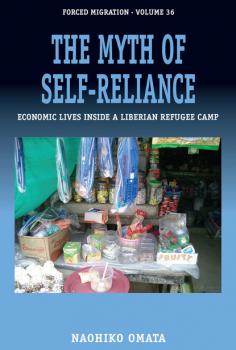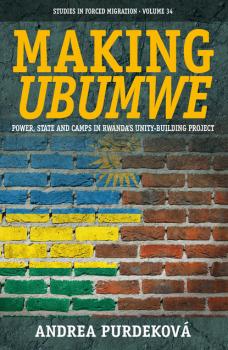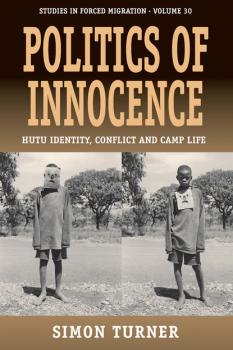ТОП просматриваемых книг сайта:
Forced Migration
Скачать книги из серии Forced MigrationАннотация
Questioning what shelter is and how we can define it, this volume brings together essays on different forms of refugee shelter, with a view to widening public understanding about the lives of forced migrants and developing theoretical understanding of this oft-neglected facet of the refugee experience. Drawing on a range of disciplines, including sociology, anthropology, law, architecture, and history, each of the chapters describes a particular shelter and uses this to open up theoretical reflections on the relationship between architecture, place, politics, design and displacement.
Аннотация
For many refugees, economic survival in refugee camps is extraordinarily difficult. Drawing on both qualitative and quantitative research , this volume challenges the reputation of a ‘self-reliant’ model given to Buduburam refugee camp in Ghana and sheds light on considerable economic inequality between refugee households.By following the same refugee households over several years, The Myth of Self-Reliance also provides valuable insights into refugees’ experiences of repatriation to Liberia after protracted exile and their responses to the ending of refugee status for remaining refugees in Ghana.
Аннотация
Since the end of the Rwandan genocide, the new political elite has been challenged with building a unified nation. Reaching beyond the better-studied topics of post-conflict justice and memory, the book investigates the project of civic education, the upsurge of state-led neo-traditional institutions and activities, and the use of camps and retreats shape the “ideal” Rwandan citizen. Rwanda’s ingando camps offer unique insights into the uses of dislocation and liminality in an attempt to anchor identities and desired political roles, to practically orient and symbolically place individuals in the new Rwandan order, and, ultimately, to create additional platforms for the reproduction of political power itself.
Аннотация
The refusal or reception of refugees has had serious implications for the social policies and social realities of numerous countries in east and west. Exploring experiences, interpretations and practices of 'refugees,' 'the internally displaced' and 'returnees' in or emerging from societies in violent conflict, this volume challenges prevailing orthodoxies and encourages new developments in refugee studies. It also addresses the ethics and politics of interventions by professionals and policy makers, using case studies of refugees from or in South Asia, the Middle East, North Africa, Europe and the Americas. These illustrate the dynamic nature of situations where refugees, policy- makers and practitioners interact in trying to construct new livelihoods in transforming societies. Without a proper understanding of this dynamic nature, so the volume argues overall, it is not possible to develop successful strategies for the accommodation and integration of refugees.
Информация о книге
Автор произведения Группа авторов
Жанр Публицистика: прочее
Серия Forced Migration
Аннотация
Recent years have witnessed a significant growth of interest in the consequences of political violence and displacement for the young. However, when speaking of “children” commentators have often taken the situation of those in early and middle childhood as representative of all young people under eighteen years of age. As a consequence, the specific situation of adolescents negotiating the processes of transition towards social adulthood amidst conditions of violence and displacement is commonly overlooked. Years of Conflict provides a much-needed corrective. Drawing upon perspectives from anthropology, psychology, and media studies as well as the insights of those involved in programmatic interventions, it describes and analyses the experiences of older children facing the challenges of daily life in settings of conflict, post-conflict and refuge. Several authors also reflect upon methodological issues in pursuing research with young people in such settings. The accounts span the globe, taking in Liberia, Afghanistan, South Africa, Peru, Jordan, UK/Western Europe, Eastern Africa, Iran, USA, and Colombia. This book will be invaluable to those seeking a fuller understanding of conflict and displacement and its effects upon adolescents. It will also be welcomed by practitioners concerned to develop more effective ways of providing support to this group.
Аннотация
At the start of the 1990s, there was great optimism that the end of the Cold War might also mean the end of the «refugee cycle» – both a breaking of the cycle of violence, persecution and flight, and the completion of the cycle for those able to return to their homes. The 1990s, it was hoped, would become the «decade of repatriation.» However, although over nine million refugees were repatriated worldwide between 1991 and 1995, there are reasons to believe that it will not necessarily be a durable solution for refugees. It certainly has become clear that «the end of the refugee cycle» has been much more complex, and ultimately more elusive, than expected. The changing constructions and realities of refugee repatriation provide the backdrop for this book which presents new empirical research on examples of refugee repatriation and reconstruction. Apart from providing up-to-date material, it also fills a more fundamental gap in the literature which has tended to be based on pedagogical reasoning rather than actual field research. Adopting a global perspective, this volume draws together conclusions from highly varied experiences of refugee repatriation and defines repatriation and reconstruction as part of a wider and interrelated refugee cycle of displacement, exile and return. The contributions come from authors with a wealth of relevant practical and academic experience, spanning the continents of Africa, Asia, Central America, and Europe.
Аннотация
Based on thorough ethnographic fieldwork in a refugee camp in Tanzania this book provides a rich account of the benevolent “disciplining mechanisms” of humanitarian agencies, led by the UNHCR, and of the situated, dynamic, indeterminate, and fluid nature of identity (re)construction in the camp. While the refugees are expected to behave as innocent, helpless victims, the question of victimhood among Burundian Hutu is increasingly challenged, following the 1993 massacres in Burundi and the Rwandan genocide. The book explores how different groups within the camp apply different strategies to cope with these issues and how the question of innocence and victimhood is itself imbued with ambiguity, as young men struggle to recuperate their masculinity and their political subjectivity.
Аннотация
The Sahrawi and Afghan refugee youth in the Middle East have been stereotyped regionally and internationally: some have been objectified as passive victims; others have become the beneficiaries of numerous humanitarian aid packages which presume the primacy of the Western model of child development. This book compares and contrasts both the stereotypes and Western-based models of humanitarian assistance among Sahrawi youth with the lack of programming and near total self-sufficiency of Afghan refugee youth in Iran. Both extremes offer an important opportunity to further explore the impact which forced migration and prolonged conflict have had, and continue to have, on the lives of these refugee youth and their families. This study examines refugee communities closely linked with the United Nations High Commission for Refugees (UNHCR) and a host of other UN agencies in the case of the Sahrawi and near total lack of humanitarian aid in the case of Afghan refugees in Iran.
Аннотация
Not Born a Refugee Woman is an in-depth inquiry into the identity construction of refugee women. It challenges and rethinks current identity concepts, policies, and practices in the context of a globalizing environment, and in the increasingly racialized post-September 11th context, from the perspective of refugee women. This collection brings together scholar_practitioners from across a wide range of disciplines. The authors emphasize refugee women’s agency, resilience, and creativity, in the continuum of domestic, civil, and transnational violence and conflicts, whether in flight or in resettlement, during their uprooted journey and beyond. Through the analysis of local examples and international case studies, the authors critically examine gendered and interrelated factors such as location, humanitarian aid, race, cultural norms, and current psycho-social research that affect the identity and well being of refugee women. This volume is destined to a wide audience of scholars, students, policy makers, advocates, and service providers interested in new developments and critical practices in domains related to gender and forced migrations.










